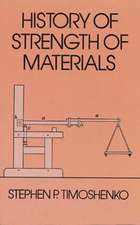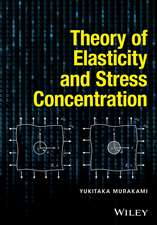Mechanical Self-Assembly: Science and Applications
Editat de Xi Chenen Limba Engleză Hardback – 14 dec 2012
| Toate formatele și edițiile | Preț | Express |
|---|---|---|
| Paperback (1) | 636.63 lei 43-57 zile | |
| Springer – 23 aug 2016 | 636.63 lei 43-57 zile | |
| Hardback (1) | 636.80 lei 43-57 zile | |
| Springer – 14 dec 2012 | 636.80 lei 43-57 zile |
Preț: 636.80 lei
Preț vechi: 749.19 lei
-15% Nou
Puncte Express: 955
Preț estimativ în valută:
121.89€ • 132.44$ • 102.45£
121.89€ • 132.44$ • 102.45£
Carte tipărită la comandă
Livrare economică 21 aprilie-05 mai
Preluare comenzi: 021 569.72.76
Specificații
ISBN-13: 9781461445616
ISBN-10: 1461445612
Pagini: 300
Ilustrații: X, 206 p.
Dimensiuni: 155 x 235 x 17 mm
Greutate: 0.32 kg
Ediția:2013
Editura: Springer
Colecția Springer
Locul publicării:New York, NY, United States
ISBN-10: 1461445612
Pagini: 300
Ilustrații: X, 206 p.
Dimensiuni: 155 x 235 x 17 mm
Greutate: 0.32 kg
Ediția:2013
Editura: Springer
Colecția Springer
Locul publicării:New York, NY, United States
Public țintă
ResearchCuprins
Mechanical Self-Assembly in Nature.- Mechanical Self-Assembly vs. Morphogenesis.- Shaping by Active Deformation of Soft Elastic Sheets.- Ion Beam Induced Self-Assembled Wrinkles.- A Kinetics Approach to Surface Wrinkling of Elastic Thin Films.- Crease Instability on the Surface of a Solid.- Buckling Delamination of Compressed Thin Films.- Delaminated Film Buckling Microchannels.- Mechanical Self-Assembly on Curved Substrates.
Notă biografică
Dr. Xi Chen is Associate Professor in the Department of Earth and Environmental Engineering at Columbia University. His research explores novel aspects of self assembly within engineering mechanics, with applications to biotechnology, nanotechnology, energy and environment. An NSF CAREER Grantee, Professor Chen has published nearly 150 papers, including cover-features in premiere journals. Dr. Chen earned his Ph.D. at Harvard University under John Hutchinson.
Textul de pe ultima copertă
Mechanical Self-Assembly: Science and Applications introduces a novel category of self-assembly driven by mechanical forces. This book discusses self-assembly in various types of small material structures including thin films, surfaces, and micro- and nano-wires, as well as the practice's potential application in micro and nanoelectronics, MEMS/NEMS, and biomedical engineering. The mechanical self-assembly process is inherently quick, simple, and cost-effective, as well as accessible to a large number of materials, such as curved surfaces for forming three-dimensional small structures. Mechanical self-assembly is complementary to, and sometimes offer advantages over, the traditional micro- and nano-fabrication.
This book also:
Presents a highly original aspect of the science of self-assembly
Describes the novel methods of mechanical assembly used to fabricate a variety of new three-dimensional material structures in simple and cost-effective ways
Provides simple insights to a number of biological systems and processes
Elucidates underlying mechanics principles of spontaneous pattern formations
Mechanical Self-Assembly: Science and Applications is an ideal book for graduate students and engineers involved in the field of mechanical self-assembly.
This book also:
Presents a highly original aspect of the science of self-assembly
Describes the novel methods of mechanical assembly used to fabricate a variety of new three-dimensional material structures in simple and cost-effective ways
Provides simple insights to a number of biological systems and processes
Elucidates underlying mechanics principles of spontaneous pattern formations
Mechanical Self-Assembly: Science and Applications is an ideal book for graduate students and engineers involved in the field of mechanical self-assembly.
Caracteristici
Presents a highly original aspect of the science of self-assembly Describes the novel methods of mechanical assembly used to fabricate a variety of new three-dimensional material structures in simple and cost-effective ways Provides simple insights to a number of biological systems and processes Elucidates underlying mechanics principles of spontaneous pattern formations Includes supplementary material: sn.pub/extras








